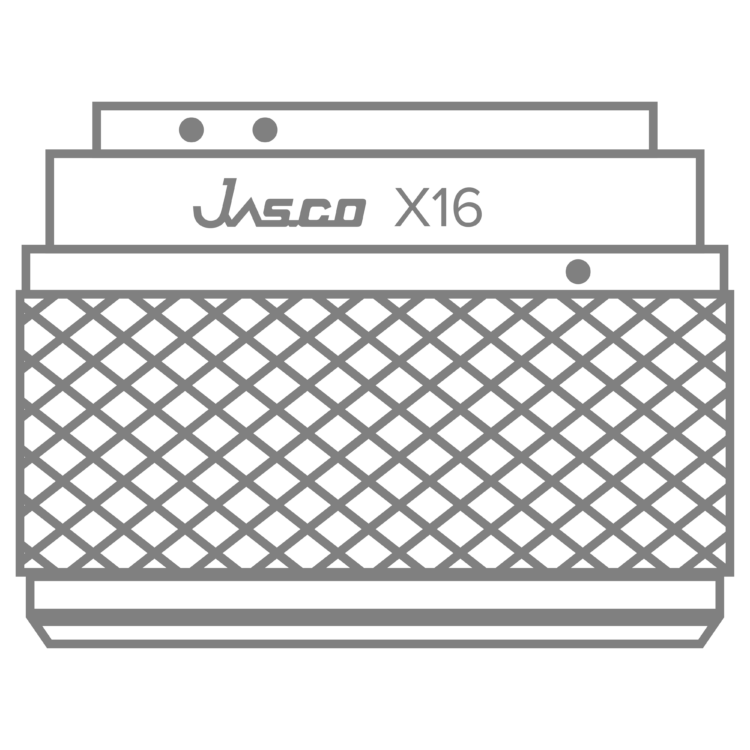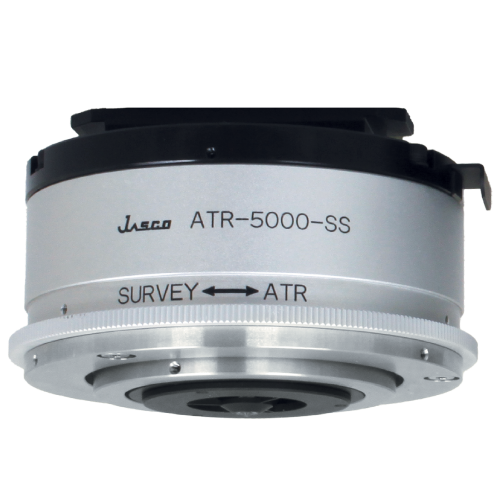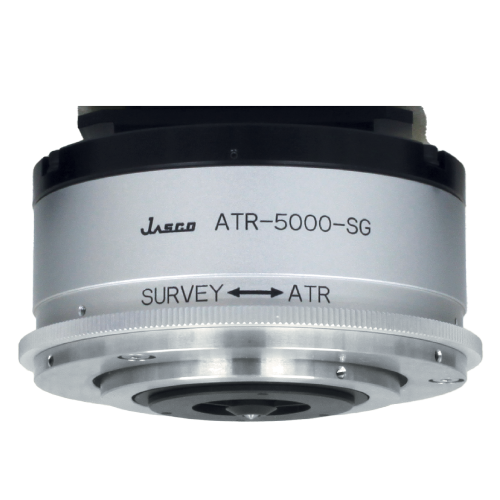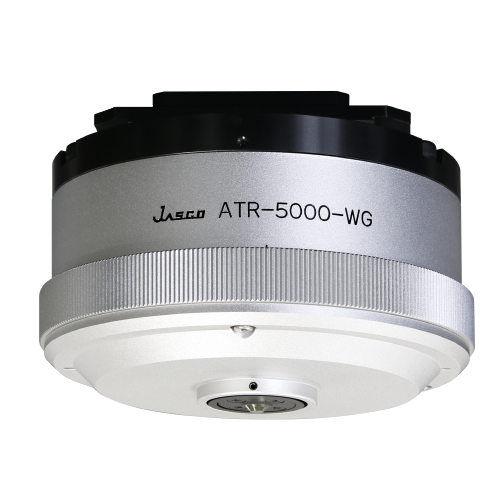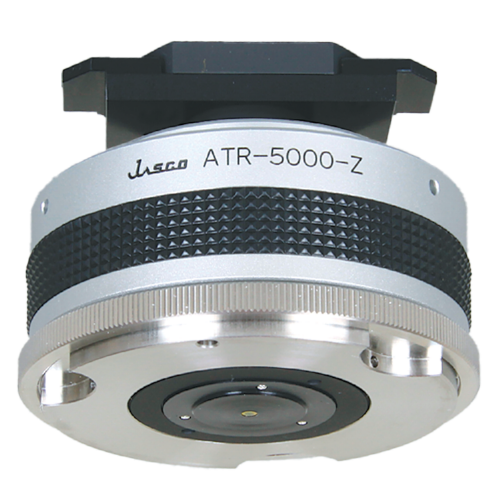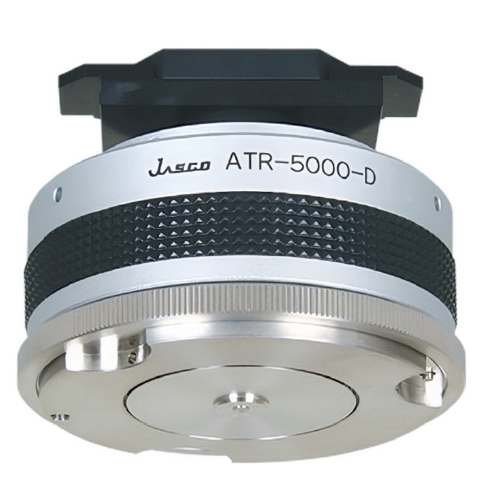Attenuated Total Reflectance (ATR) accessories have significantly reduced the amount of sample preparation required for macro FTIR measurements. Before ATR was developed, samples could only be measured in either transmission or reflection mode, which involves time consuming dilution, pellet making, or diffuse reflectance measurement. FTIR microscopy has the same sample preparation as macro FTIR measurements, which can be significantly reduced by using an ATR objective.

Sample Observation
In FTIR microscopy, sample observation is important to positively identify the correct area of interest is being measured and analyzed; however, it is impossible to view samples through the crystal of an ATR objective. Traditionally, in ATR mode, a Cassegrain or refractive objective is first used for sample observation, which is then exchanged with an ATR objective for sample measurement; however, synchronization between the observed and measured images can be challenging when dealing with spatial resolution down to several microns.
Sample Contact
ATR accessories require intimate sample contact for the evanescent field that propagates from the crystal to interact with the molecules at the sample surface. The applied pressure of the ATR crystal on the sample can cause a change in the shape of the material, making mapping or repeated measurements of the same sample difficult or even impossible. A pressure sensor is required for use with ATR objectives to apply exactly the right amount of contact pressure without damaging the sample. The pressure can be set and monitored in both the Spectra Manager Microscope Measurement program and the control panel on the front of the microscope. An audible alarm alerts the user when the preset pressure has been reached. A pressure sensor allows routine measurements to be performed at specified and reproducible pressures, independently of the skill-level of the operator. In addition, ATR mapping can be performed with constant pressure being applied across the entire measurement area.
ClearView™ ATR Objectives
ClearView™ ATR objectives allow both observation of the sample and ATR spectral measurement using a single objective, by switching the crystal position between Survey mode (up) and ATR mode (down). ClearView™ ATR objectives consist of a Cassegrain and an ATR crystal made from germanium, zinc selenide or diamond, which are transparent to visible and infrared light, enabling simultaneous measurement and observation when the sample before and when in contact with the crystal (germanium is used only for survey mode and cannot be used for sample contact).
The measurement area is first observed and selected using the ATR–5000–S type objectives, and then after the crystal has made contact (not possible with conventional ATR objectives), the correct selection of the contact area is confirmed.
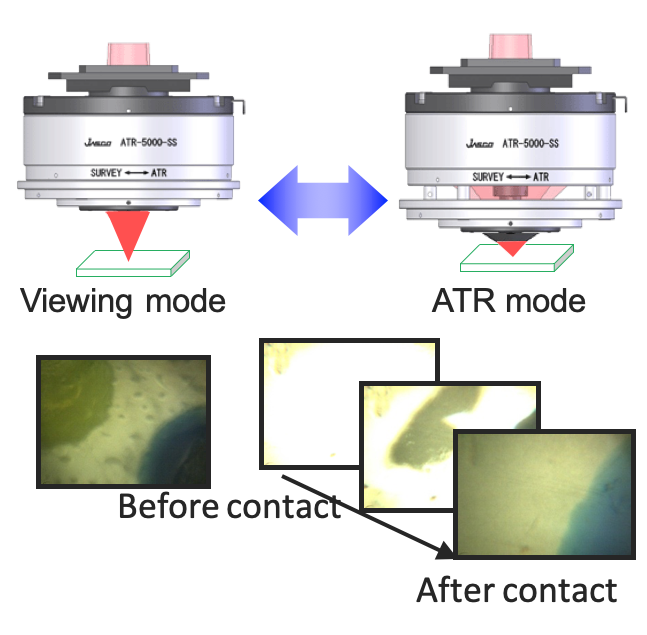
ATR Mapping
In transmission or reflection mapping, the Cassegrain objective never comes into direct contact with the sample, so the stage can easily be moved to map an area; however, in ATR mapping, the ATR objective must be in direct contact with the sample. When performing traditional ATR mapping measurements, the ATR objective is lowered onto the sample to acquire a single measurement point, then the ATR objective is raised to allow the sample stage to move to the next measurement point, before lowering the ATR objective back onto the sample.

IQ Mapping™
When performing IQ Mapping™ measurements, the ATR objective remains in contact with the sample for the entire mapping measurement. Each measurement point is acquired by moving the aperture around the field of view of the objective (yellow square in red grid).
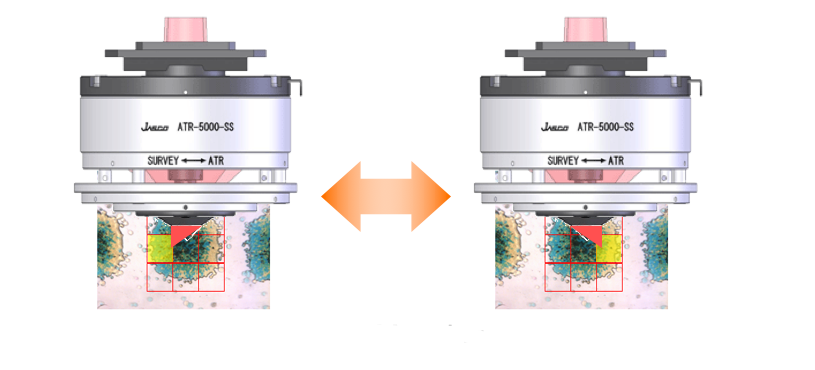
IQ Mapping™ eliminates cross-contamination, saves time during sample measurement, and minimizes the risk of the sample moving or being damaged when the point of contact for measurements is changed. While IQ Mapping™ is particularly useful when performing ATR measurements, it offers similar benefits in transmission and reflection measurement modes.
ATR-5000-SS
(Zinc Sulfide)
RI (1,000 cm-1): 2.2
Magnification (Survey): 16x
Numerical Aperture (NA): 0.76
Wavenumber Range:
7,000 – 700 cm-1
Measurement Area:
180 µm x 180 µm
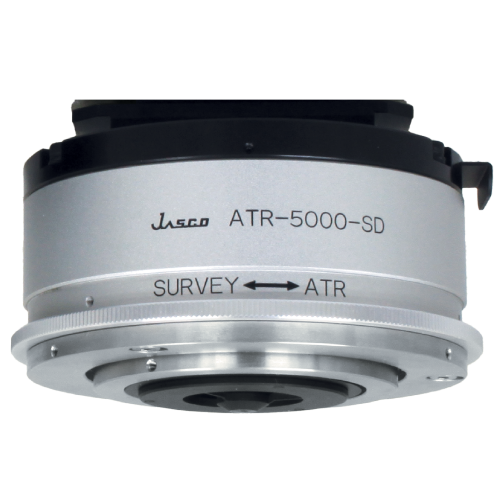
ATR-5000-SD
(Diamond)
RI (1,000 cm-1): 2.4
Magnification (Survey): 16x
Numerical Aperture (NA): 0.70
Wavenumber Range:
7,000 – 700 cm-1
Measurement Area:
180 µm x 180 µm
ATR-5000-SG
(Germanium)
RI (1,000 cm-1): 4
Magnification (Survey): 16x
Numerical Aperture (NA): 0.76
Wavenumber Range:
5,200 – 650 cm-1
Measurement Area:
100 µm x 100 µm
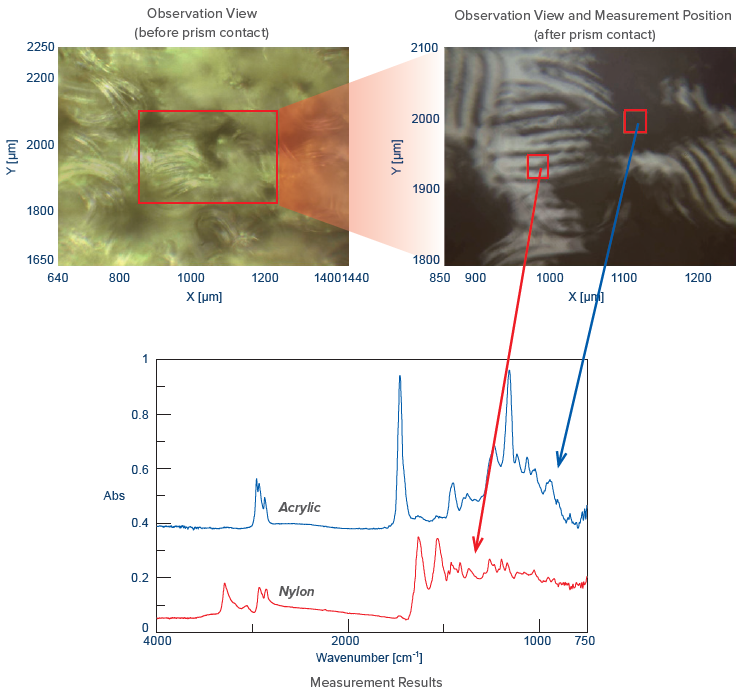
Wide-Area ATR Objectives
Two recently developed ATR objectives can be used for extremely wide-area imaging and mapping and can achieve high-throughput in a single contact point when combined with IQ Mapping™.
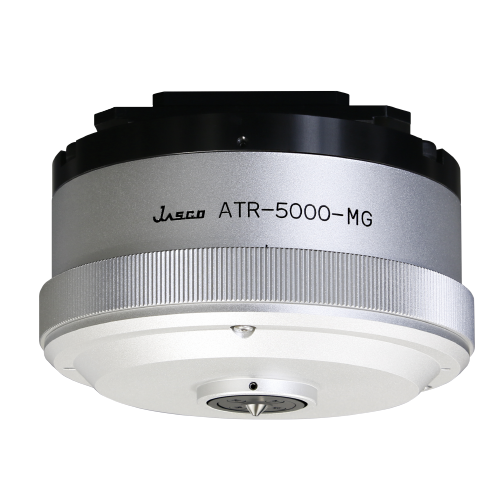
ATR-5000-MG
(Germanium)
RI (1,000 cm-1): 4
Wavenumber Range:
5,000 – 650 cm-1
Measurement Area:
400 µm x 400 µm
Resolution: 12.5 µm
ATR-5000-WG
(Germanium)
RI (1,000 cm-1): 4
Wavenumber Range:
5,000 – 650 cm-1
Measurement Area:
1,600 µm x 1,600 µm
Resolution: 50 µm

Conventional Type ATR Objectives
In addition to the ClearView™ range of ATR objectives, the IRT-Series also includes several conventional ATR objectives including a projection type for samples with raised or uneven surfaces (Tables 2 and 3). This range of ATR objectives cover different measurement areas, spatial resolutions, penetration depths, or wavenumber ranges.
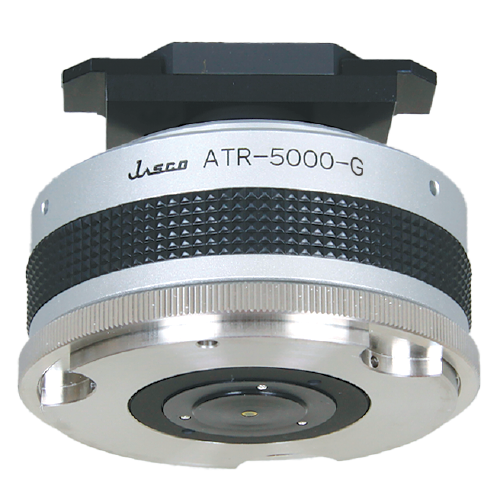
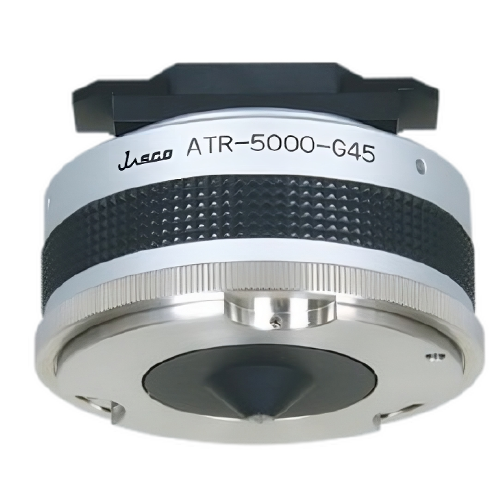
ATR-5000-Z
(Zinc Selenide)
RI (1,000 cm-1): 2.4
Numerical Aperture (NA): 0.87
Wavenumber Range:
15,000 – 650 cm-1
Measurement Area:
102 µm x 102 µm
ATR-5000-D
(Diamond)
RI (1,000 cm-1): 2.4
Numerical Aperture (NA): 0.87
Wavenumber Range:
7,800 – 400 cm-1
Measurement Area:
50 µm x 50 µm
ATR-5000-G
(Germanium)
RI (1,000 cm-1): 4
Numerical Aperture (NA): 0.87
Wavenumber Range:
5,500 – 830 cm-1
Measurement Area:
70 µm x 70 µm
ATR-5000-G45
(Germanium)
RI (1,000 cm-1): 4
Numerical Aperture (NA): 0.71
Wavenumber Range:
5,800 – 830 cm-1
Measurement Area:
70 µm x 70 µm
Optional Objectives
Cassegrain Objectives
Gold (Au): 10x, 16x, 32x
Aluminum (Al): 10x, 32x
Cassegrain Objectives
Gold (Au): 10x, 16x, 32x
Aluminum (Al): 10x, 32x
Cassegrain Objectives
Gold (Au): 10x, 16x, 32x
Aluminum (Al): 10x, 32x
Cassegrain Objectives
Gold (Au): 10x, 16x, 32x
Aluminum (Al): 10x
Refractive Objectives
4x, 10x, 20x
Refractive Objectives
4x, 10x, 20x
Refractive Objectives
4x, 10x, 20x
Refractive Objectives
4x, 10x, 20x
Applications of IQ Mapping™ with a ClearView™ ATR Objective
-
Application
Measurement of Nail Polish using IR Microscopy with Clear-View™ ATR
Q. How can microscopic foreign objects be measured by Attenuated Total Reflectance (ATR)? A. In FTIR microscopy, sample observation is important to positively identify that the correct area of interest is being measured and analyzed; however, historically it has been impossible to view samples through the crystal of an ATR objective. JASCO has deve...
-
Application
Measurement of Microparticles in Facial Cleansers using IR Microscopy with Clear-View™ ATR
IR Microscopes have been widely used for the identification and imaging of microscopic samples to visualize the chemical composition and distribution. Attenuated Total Reflectance (ATR) methods require little to no sample preparation or pre-treatment and allow precise measurement of particles at the micron level, which can be difficult by transmiss...



